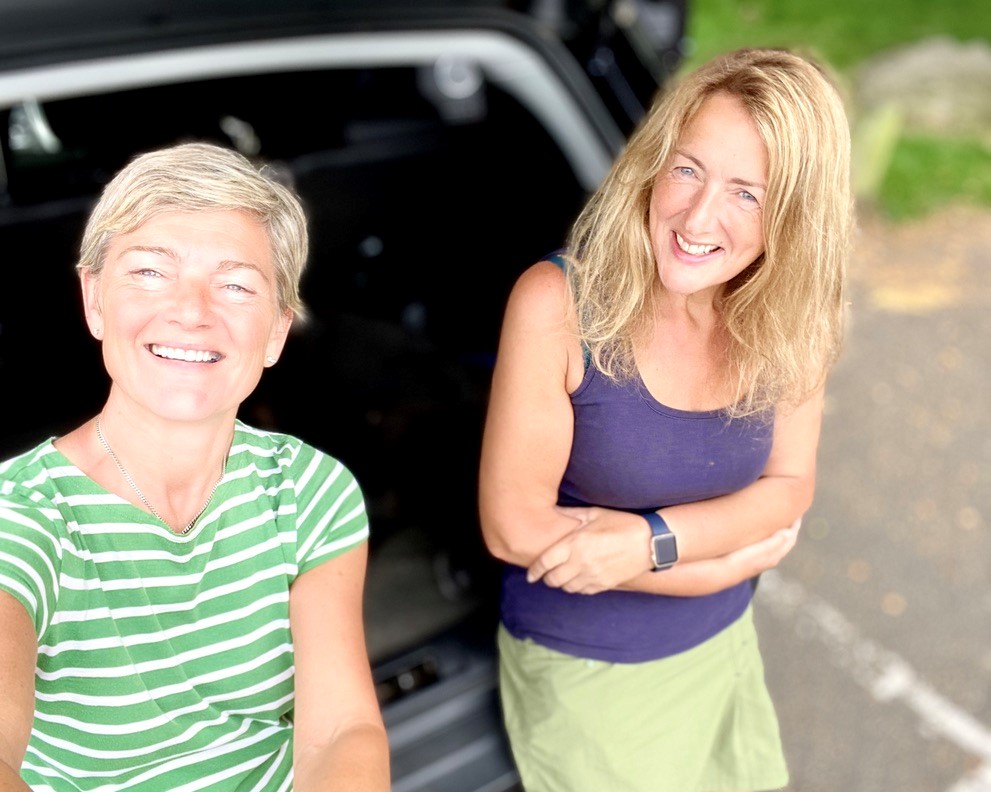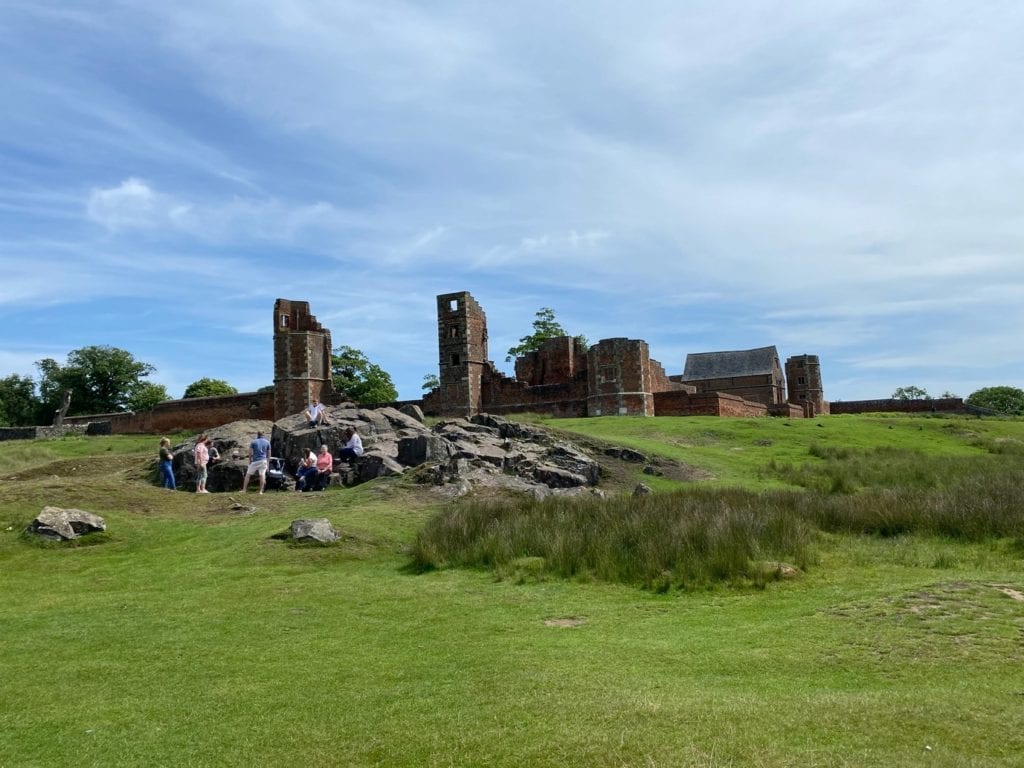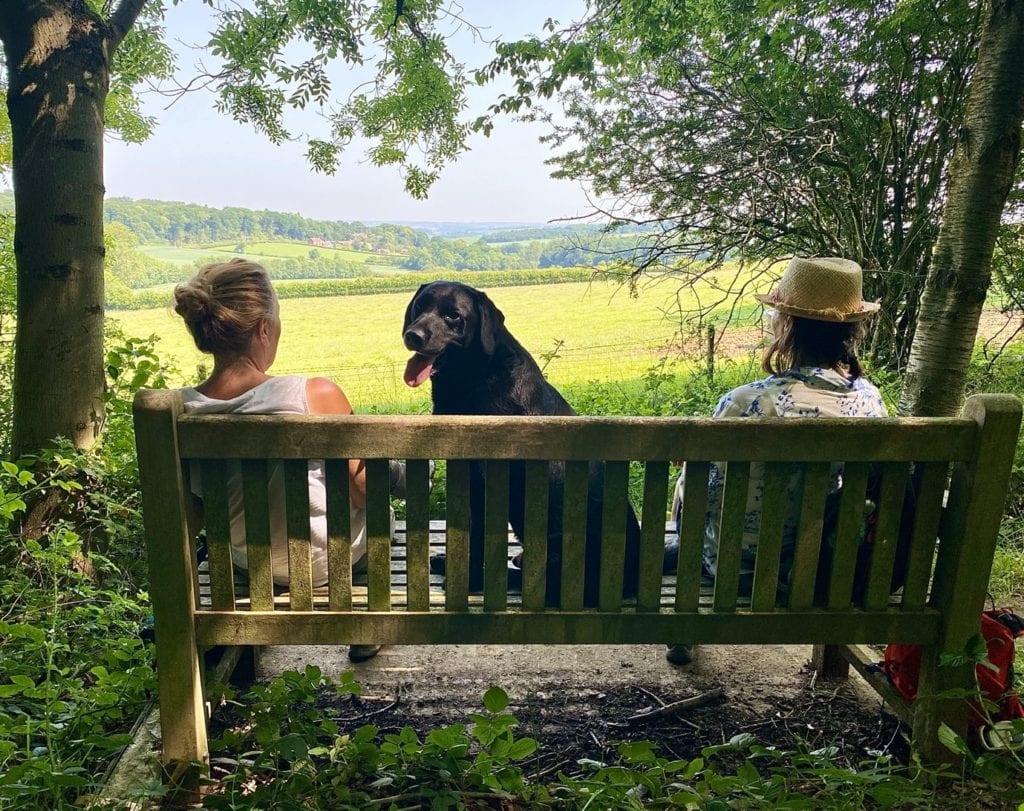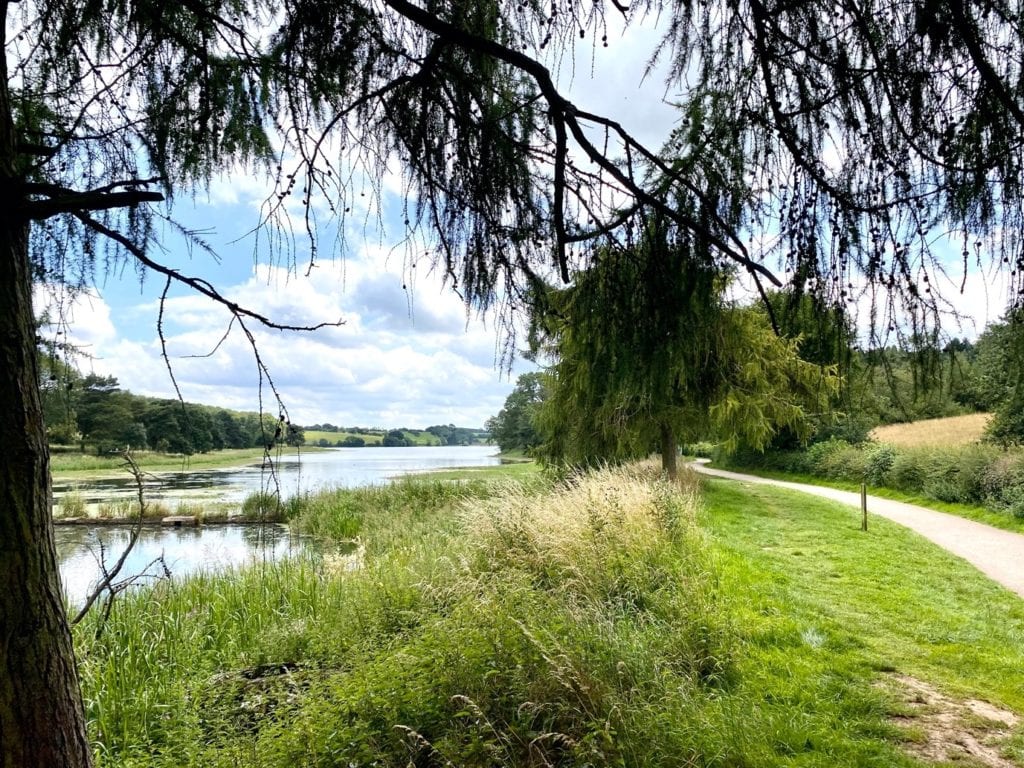In recent months, some freedoms we hadn’t realised were freedoms have become privileges we now navigate with hand sanitiser, face coverings, and two metres apart. Even when every eventuality seems planned for, circumstances can change so rapidly we might find ourselves unexpectedly quarantined should we take the plunge and risk a trip away. The reasons not to take a holiday abroad this year appear compelling.
For my best friend Gillian and I, our annual walking holiday has become a diary non-negotiable. But this summer, surely such an unpredictable situation meant a holiday was not just unfeasibly complicated but also rather irresponsible? We were determined to find a solution.

Like ‘prorogue’ and ‘furlough’ before it, the word ‘staycation’ is one that hadn’t previously been on our radar. The Leicestershire Footpath Association’s guide to the Leicestershire Round had been sitting at the back of Gillian’s kitchen drawer for some time; maybe now was the moment to dust it off and tackle some of the 100 miles it covered, visiting our home area as ‘tourists’? From the small beginnings of a plan, it was a short leap to the happy realisation that our walking holiday didn’t have to be cancelled if we didn’t want it to.
First stop – Newton Linford
Our ten-day circuit was to start and finish at Newton Linford on the edge of Bradgate Park. The team – the two of us plus Gillian’s Labrador, Buzz – were champing at the bit to get started..
The start of the walk takes you through the beautiful Bradgate Park alongside the River Lin, past Old John Tower and the ruins of Bradgate House. This impressive manor has a sad history as it was once the home of the Greys. At just 16, Lady Jane Grey was forced by her family to lay claim to the throne of England by virtue of her family link to Henry VII. This so angered Mary Tudor she beheaded the poor girl for treason.

There’s lots to see on this stage of the Leicestershire Round. It passes through the attractive village of Woodhouse Eaves, over the Great Central Railway where you might just catch sight of a steam train and past the breathtaking Swithland Reservoir with its boathouse and viaduct. Intriguingly just out of sight, at one end of the reservoir, are the Grade II-listed waterworks. One of Leicestershire’s hidden beauties, it’s a wonderful example of no-cost-spared Victorian engineering and more resembles a fine stately home with formal gardens than a utility site. Beyond the reservoir, we passed the quarry, active since the early Iron Age.
If you like your hills short and sharp, a detour worth taking is the climb from Woodhouse Eaves up to the Bronze Age fort at Beacon Hill with its sweeping views across the Soar Valley and Charnwood Forest. Leicestershire is not known for its hills and, at just 245m, Beacon Hill is one of the highest points in the county. On a good day, you can expect to see as far as the Peak District from the summit.
Walking by water
The second day took us along the Wreake Valley from Cossington to Gaddesby. In Rearsby, we paused to take out our flask by the beautiful, arched pack-horse bridge. At Thrussington Mill, we crossed the disused Melton Mowbray navigation which closed in 1877, although some of the bridges and structures of the original 12 locks remain.
The walking was easy on this leg, but we did have to cross the busy A46 dual-carriageway, and the Midland Main Line several times. Typical of many stages of the Leicestershire Round, the route took us through some lovely countryside, following narrow tracks alongside The Wreake, crossing neatly hedged pastureland and walking through tall grasses and young trees near Ratcliffe College.
For the most part, the route was well-organised and clearly signposted. However, also typical was a varying quality in the accessibility of some stretches of the path with a mix of hand-gates, kissing gates, stiles with dog gates and those without. When walking with a 34kg dog, getting over some of the trickier stiles can be a challenge!
Day three was boiling hot as we walked from Gaddesby to Somerby. The real high point of this section, in every sense of the word, is the Iron Age fort of Burrough Hill. Boasting incredible 360-degree views across the Wreake Valley, it also offers a welcome breather from the sweaty climb up to the top. As you descend you follow ancient public footpaths through the shaded Burrough woodland and out up a steep hill into Somerby, where we found an open shop with an ice cream for the whole team.
We had been looking forward to day four as it was to be a nostalgic trip through the villages, woods and farmland of our formative years, in Owston and Withcote. We also found time to explore the disused icehouse behind Launde Abbey, a lush, green, romantic location and, with its spinneys, brooks and parkland, venue of many childhood adventures inspired by Enid Blyton’s wonderful Famous Five stories. We were disappointed to find the abbey closed as it serves one of our favourite cream teas in the county. A small compensation was to finish the day with our flask, watching the ducklings on the village pond in Hallaton.
Revisiting a favourite spot
Rained off for a couple of days, day five found us refreshed and ready to tackle the 10 miles from Hallaton to Foxton. Hallaton is a place we’ve returned to on many occasions, not just for the warm welcome in the pubs, the museum of local history, its interesting conical butter cross (market space) or the range of beautiful houses with their perfectly tended gardens, but also for the maze of snickets snaking their way around the village, popping you out in different locations, each with something new and interesting to discover.
Leaving Hallaton reluctantly behind, we crossed through the farmland and villages we know well and love. It’s such a verdant and plentiful landscape: one minute the footpath slices its way neatly through a well-tended wheat crop, the next it meanders a swaying meadow of wildflowers, then cresting a hill to take in far-reaching views of the Leicestershire countryside. Don’t forget to turn back as you leave Hallaton to get a great view of the village and the remains of the motte and bailey castle site.
On day six, we couldn’t resist delaying at Foxton Locks to watch the comings and goings and yo chat with the knowledgeable enthusiasts who get canal traffic smoothly up and down the magnificent ten-lock staircase. Historically and visually, it’s a fascinating place.
From Foxton, we made for Gumley, a pretty village set among trees and parkland and featuring an interesting stable block with an unexpected Italianate campanile tower. We rather liked the way the church nestled among the trees and took shelter from a rain shower in the porch with our flask and a slice of cake. Just before the village of Saddington, we crossed a series of footbridges over the canal feeder, Laughton Brook and the Saddington Brook. Buzz discovered that at least one of these was a bit smelly. He didn’t mind.
The day we had been waiting for
We started day seven in Peatling Magna, where our route took us across open fields to Willoughby Waterleys where we passed the lovely Norman church and an inn (The General Elliott) named after George Augustus Eliott (1717–90), former Governor of Gibraltar. We walked through the Holy Farm Fishery and from there, headed towards the M1. You hear it long before you see it, something that always prompts a discussion about how often noise pollution sadly impacts the countryside we walk through.
After crossing over the motorway, we gladly headed away from the noise and across the fields to Dunton Bassett. Between Stemborough Mill and Frolesworth, the path followed a stream and fishponds. The brambles were alive with butterflies and we bumped into two little boys heading for the ponds where they told us they had caught crayfish the week before.
Day seven was to be auspicious in that it would be the first leg on which we encountered a restaurant open for lunch: the Crab and Cow. I chose spiced beetroot arancini; Gillian went for a classic fish finger sandwich. We were most impressed.
Lunch finished, we set off for the final stop of our walk, Claybrooke Parva. The last section of the walk included a rather magnificent sweet chestnut tree with a twisted trunk just as we entered the village.

The sun joined us once more for day eight. Just outside of Claybrooke Parva, the evocative fragrance of a hayfield awaiting the baler took both Gillian and I straight back to childhood summers. High Cross marks the centre of Roman England with the junction of its two most important roads: the Fosse Way and Watling Street. We made a short detour to look at the monument built here by the Lord Lieutenant of Leicestershire in 1712 and then took the quiet, ancient Fosse Way, now a green lane.
A real highlight of this leg was the Fosse Meadows Nature Area and arboretum where 49,000 trees have been planted across the 142-acre site, and Burbage Common, a 200-acre area of common land managed by Hinckley and Bosworth Borough Council. The lack of litter was testament to how much the many people who use it love the place.
We found a wonderful café, where my egg salad sandwich really hit the spot. Suitably restored, we tackled the final section of the day to finish in Barwell, which, as the Leicestershire Footpath Association’s guide puts it, is “long known as a centre for the shoe industry, rather than for its charm”.
Walking through history
The start of the penultimate day of the walk was not terribly salubrious, taking us out of Barwell through an industrial estate. The footpath was evidently one used by many other dog owners… However, things quickly improved and at Sutton Wharf the route passed along the Ashby Canal towpath and through woodland to the Bosworth Battlefield visitor centre. Onwards to Sutton Cheney the path is very picturesque. The church is said to be the place where Richard III celebrated mass the night before the Battle of Bosworth Field. The alms houses behind the church are beautifully preserved.
The next town, Market Bosworth, was dressed in its summer best of bloom-filled hanging baskets. We indulged in a spot of people-watching at the marketplace with a delicious lunch at an outside table at Softleys. Just before reaching our final stop for the day, in Shackerstone, we passed over the footbridge of the old railway station, which closed in 1970 but is now run as a visitor attraction by a group of enthusiasts and offers a well-maintained window to times past.
The circle complete
Just like the last day of a holiday, the final leg, back to where we started in Newtown Linford, seemed to have come around far too soon. We began by walking through agricultural land, over large arable fields, past the glorious Thornton Reservoir then into the woodland of the National Forest. This is an inspired re-landscaping of an area formerly scarred by coalmining and as you walk through the mature, shaded plantations, it’s really hard to believe that it was planted just 25 years ago. To celebrate our achievement, we made time for a celebratory cup of tea at the Park Kitchen and Deli.

One of the many joys of a staycation is that you make up your own rules, because inevitably, a holiday — though intended to be a break away from the everyday of normal life — is ‘framed’ in one way or another; by the start and finish date, by the itinerary chosen, by availability.
With a staycation, none of these apply. When it rained, we didn’t walk. If we were tired, we rested. We varied our route at our whim. It’s a truly bespoke experience where plans can be easily amended without notice and at no cost. We loved it so much that we are already planning our next trip.
More information
Discover more of Bobby’s adventures on her Facebook page, Fifty Not Out.